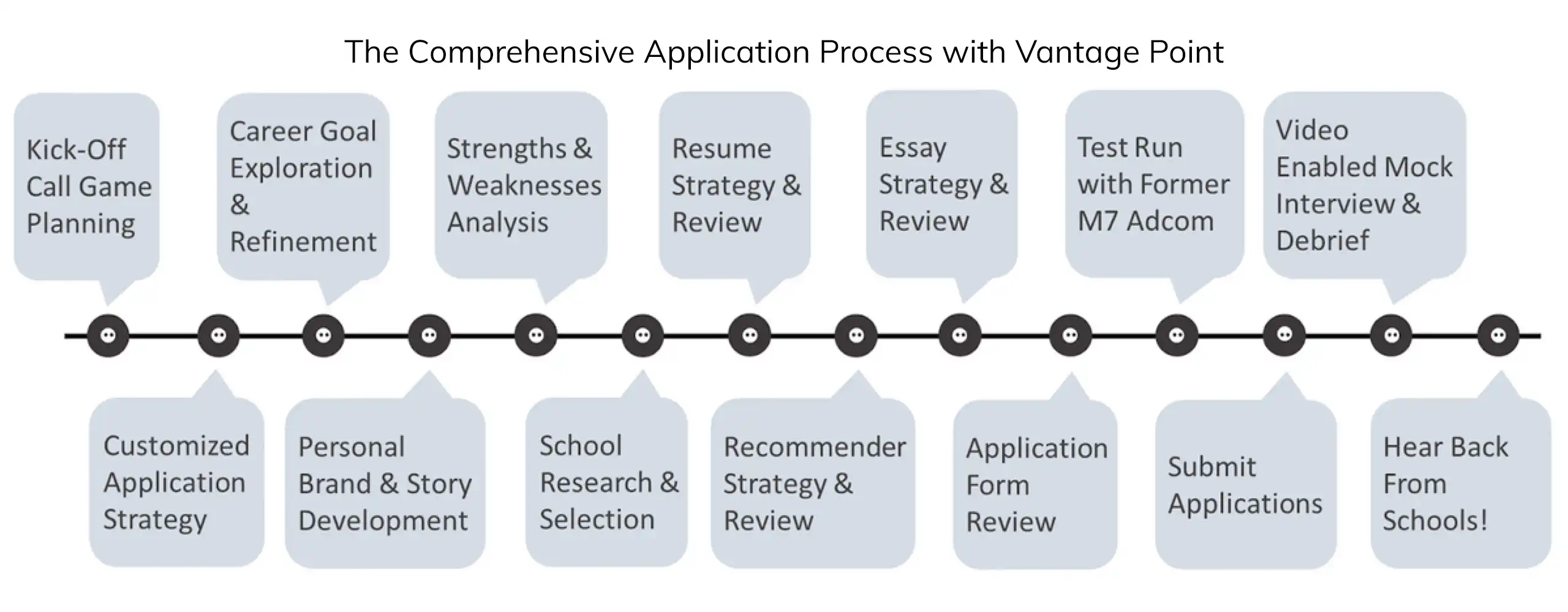Stanford GSB – An Insider’s Guide to Stanford MBA Admissions
Overview of For the second installment of our ‘Insider Guides’ series, we’re sharing everything you need to know about Stanford MBA Admissions. You’ve likely heard of the GSB’s reputation for helping graduates launch startups and enter the tech space, but is there a place for you if those are not your focus areas? Is the culture truly as collaborative and open as you’ve heard? As we did with Harvard Business School last week, we’ll go beyond the published facts and statistics, sharing what it’s really like to go to business school at Stanford.
Without further ado, here is our Insider’s Guide to Stanford GSB.
The Basics: Overview of Stanford MBA Admissions
With an acceptance rate just north of 6%, admission into Stanford GSB is the most competitive of all business schools (HBS’ acceptance rate is roughly 12%, for reference). The metrics of enrolled students follow suit, with the latest class having an average GMAT score of 737 (GRE of 327) and average undergraduate GPA of 3.76.
Located south of San Francisco in Palo Alto, CA, the GSB enrolls a small/medium class of ~400 students each year. Each class is diverse on a multitude of dimensions, from race, gender, and national origin to undergraduate major and pre-MBA industry (although, as we shared last week, there is data showing that these diversity statistics may be a tad misleading).
In 2019, GSB was the first business school in the world to issue a highly detailed report on diversity, equity, and inclusion. Beyond reportable statistics, the GSB’s famously open-ended essay question (‘what matters most to you and why?’) allows the admissions committee to cultivate a class with diverse perspectives and passions. So, how does that translate to the lived experience of a Stanford GSB student? Read on to find out and get tips on maximizing your chance of Stanford MBA admission.</p></p>
Academics
The GSB’s curricular focus is on intellectual involvement, globalism, leadership, and communication development. There is also an emphasis on entrepreneurship, with entrepreneurs such as Joel Peterson (JetBlue) and John Morgridge (Cisco) on faculty. Private equity, venture capital, and entrepreneurship classes usually have the case protagonist in attendance to give the ‘real’ story.
First year is a flexible core with some electives. While you can’t test out of any core requirements, there are three tiers for students that are beginners in the topic, have some knowledge, or are at the expert level. Second year is all electives (and much better, according to students/alums in our network). There is a required international experience (trip or internship) before the beginning of second year.
There is a lottery system for all classes. It is important to know which classes are most important to you so that you can rank them correctly. Popular classes include Interpersonal Dynamics (aka Touchy-Feely), Managing Growing Enterprises or High-Performance Leadership, Start-Up Garage or Biodesign, and Corporate Financial Modeling (aka DeMarzo). There are no explicit majors.
The GSB has a strong culture of grade non-disclosure, even in competitive employment areas like consulting. You are allowed to share honor distinctions or accolades on your resume but may get dinged by a GSB alum if you include your GPA.
The grade structure is Low Pass (LP), Pass (P), High Pass (HP), and Honors (H); most students receive a P. Participation usually accounts for 20%-40% of your overall course grade and attendance is largely mandatory. Classes vary in their reliance on cold calling from none to only cold calls; when relevant, cold calls are casual (and you can “pass”).
Culture & Student Experience
The GSB culture is extremely collaborative. Students will go out of their way to help a classmate. Outright competition is downplayed, though it is there under the surface. Other commonly held values include high emotional intelligence, strong self-awareness, and a willingness to take risks.
The GSB is considered a safe zone for sharing, receiving, and processing difficult feedback. This can illuminate that thing you do that your coworkers can’t stand but have been afraid to tell you about. Maintaining this “safe zone” part of the culture is very important.
There is a big emphasis on building one GSB community. A student-initiated tradition called TALK happens twice a week where students tell their often-moving personal life stories — their family upbringing, what matters most to them and why, how they have overcome tragedies, etc.
There is a strong, diverse social scene with meetups Tuesday and Thursday and frequent dinner parties or casual barbecues. All first years can live on campus if they want to, which makes socializing easy and inclusive. Most second years live off-campus and there is a strong culture of off-campus “passdown houses” which means that homes get passed down from outgoing to rising second year students.
Extracurriculars
While most students have one primary club that they participate in or help lead, many participate in multiple clubs or types of activities – there is no single path. More popular clubs include the investing club, consulting club, and tech club. The larger clubs tend to host conferences, but not all do. Arbuckle Fellows is a large leadership and coaching program.
Every student must fulfill their global experience requirement through a Global Study Trip (GST) or a short summer internship (GMIX). GST is a theme-oriented trip to a foreign country with 20 classmates led by five second year students.
Popular events and activities that are uniquely Stanford include: View from the Top (guest speakers interviewed by current students), LPF (Friday happy hour on campus), TALK (see above), GSB Show (student production), Challenge 4 Charity (West Coast business schools come to Stanford to compete in events), and a collection of larger social events hosted by the social committee that vary each year.
Closing Thoughts
We hope this article provided insight into aspects of the Stanford MBA admissions you won’t easily find on the school’s website or in the forums. Having a nuanced understanding of what makes each program unique will not only help you decide where to apply (or attend), it will also help you put your best foot forward during the admissions process. Best of luck on your journey. If we can be of assistance, reach out to request an initial consultation.





Pingback: 2024-2025 Stanford MBA Essay Tips | Vantage Point MBA
June 20, 2024 11:46 pmPingback: My Stanford GSB Interview Experience: Questions To Expect and How to Prepare
September 26, 2024 6:38 pmPingback: The Best MBA Programs for Sustainability | Vantage Point MBA
April 23, 2025 2:30 pmPingback: How to Stand Out in Your MBA Application: What Really Matters
June 5, 2025 11:54 pm